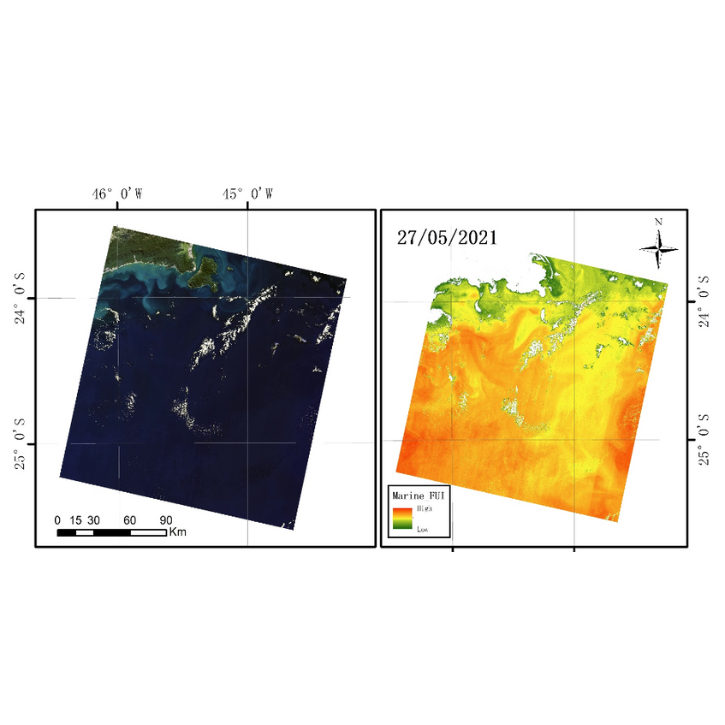Water Quality Monitoring
Water quality monitoring involves using remote sensing technology and Geographic Information Systems (GIS) to monitor and assess the physical, chemical, and biological characteristics of water bodies.
Description
Image Area: off São Paulo
Usage
Used for monitoring water quality by detecting parameters such as turbidity, chlorophyll concentration, and suspended solids, providing detailed and accurate assessments of water bodies;
Monitoring Frequency
Vary from daily to seasonal assessments, depending on the specific requirements of the study or management program, enabling timely detection of changes and trends in water quality;
Significance
Crucial for managing and protecting water resources, ensuring public health, supporting environmental conservation efforts, and responding promptly to pollution events.






